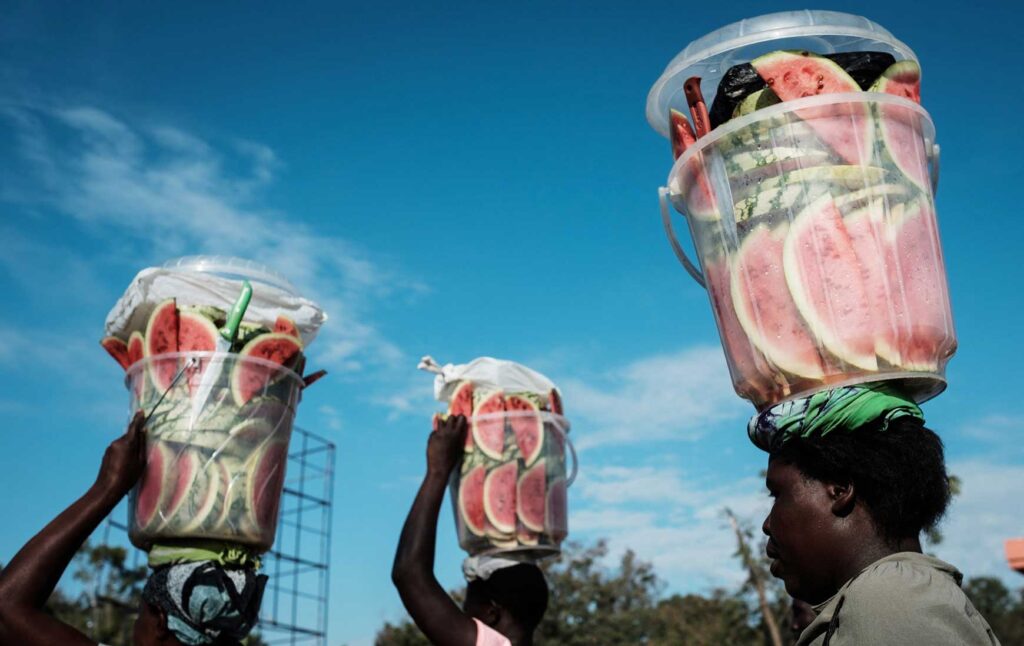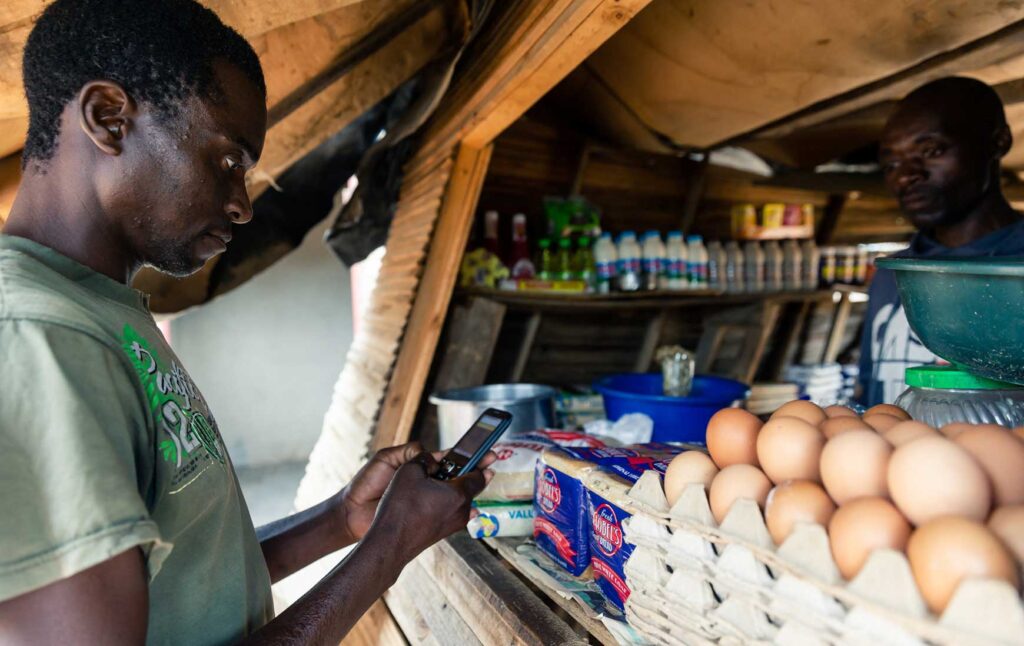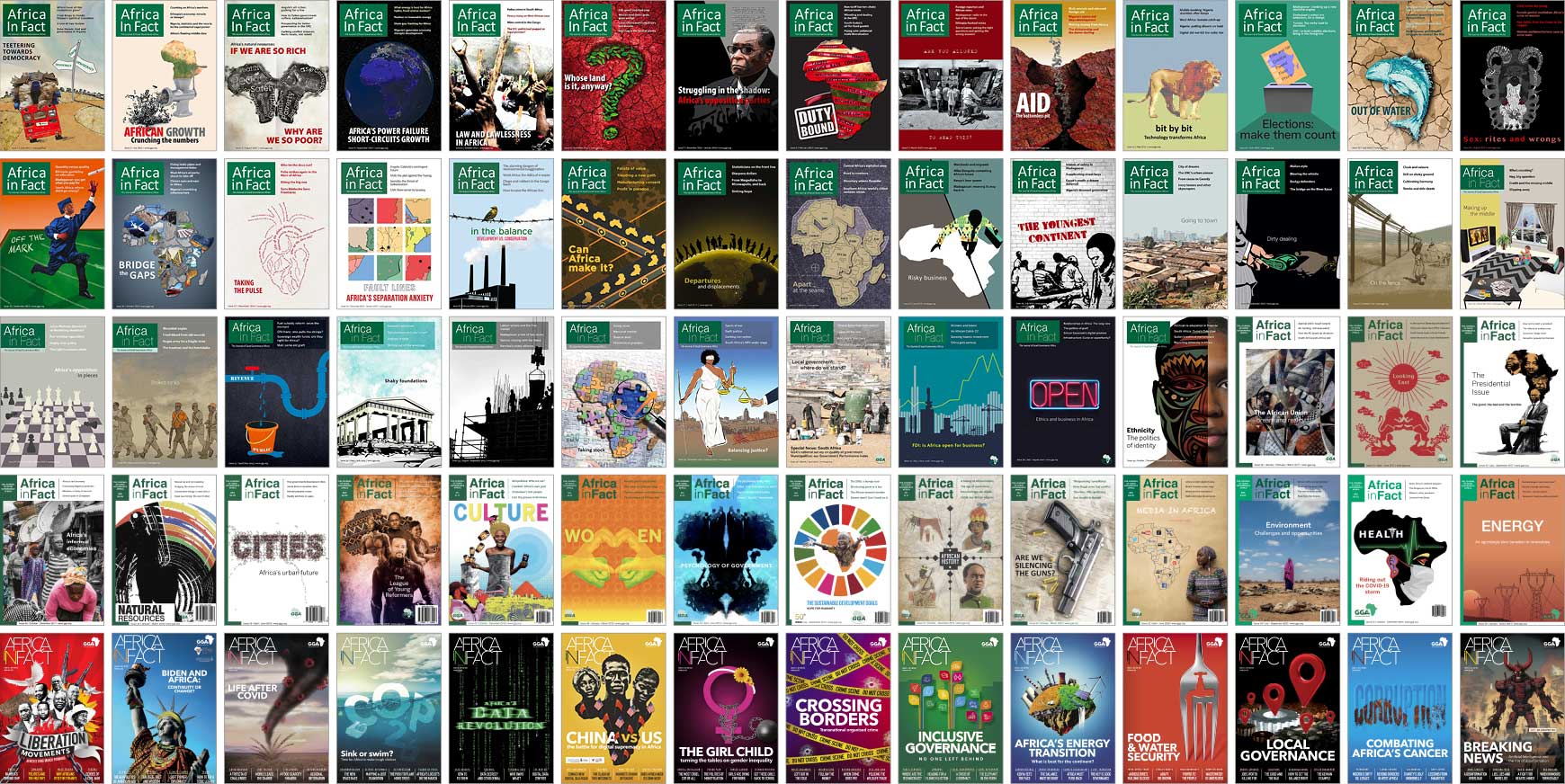The joke that every city child knows that milk comes from boxes and not cows highlights a distressing reality: while food is central to the healthy development of Africa’s cities, food supply is rarely on the urban planning agenda, while urban demand is equally absent from rural food security policy, despite rapid urbanisation across the continent.
That is a glaring gap that a series of 18 studies presented in the 2018 book, Urban Food Systems Governance and Poverty in African Cities, edited by Prof Vanessa Watson and Dr Jane Battersby-Lennard of the University of Cape Town, hopes to bridge.
The book examines in particular detail three cases of food security and governance in sub-Saharan secondary cities – Kisumu in Kenya, Kitwe in Zambia, and Epworth in Zimbabwe – because medium-sized cities like these are often overwhelmed by urbanisation yet are given insufficient attention by political elites who prioritise capital cities, industrial heartlands, and major conurbations.

In fact, according to the Organisation for Economic Co-operation and Development’s (OECD) 2022 report, Africa’s Urbanisation Dynamics, the ties between food-producing rural areas and smaller cities are closer than with larger cities: 50% of Africa’s rural households live within a mere 14 km and 90% within only 47 km of a city (here, a “city” is defined as having more than 10,000 residents), yet more than 20% of them live closest to a city of between 10,000 and 250,000 inhabitants, that is, small to mid-sized cities.
“In contrast, less than 10% of the rural population lives closest to a city of more than 250,000 inhabitants. These numbers underscore the importance of small and mid-sized cities, which are home to more than 250 million Africans (44% of the total urban population),” the editors write.
This proximity enables rural residents to access more urban services and provides a ready market for goods, especially foodstuffs, produced in rural areas. Yet, there are many challenges in getting produce to these cities. There is, for instance, often a lack of preservative methods in rural areas, such as canning or refrigeration. Road or rail links to the cities are poor, and smaller cities have inadequate urban financing and administrative power to feed a burgeoning population.
The OECD report warns that urbanisation in Africa is accelerating at an alarming rate, far outstripping policy interventions and amelioration efforts, stating that “since 1990, the number of cities in Africa has doubled – from 3,300 to 7,600 – and their cumulative population has increased by 500 million people. Africa’s cities are the most rapidly growing cities in the world; they are the youngest, and they are changing fast. Their impact on Africa’s economic, social and political landscape in the coming decades will likely be profound.”
By 2050, another 900 million Africans are projected to be urban dwellers. While the OECD report is upbeat about the developmental opportunities presented by this overwhelmingly young population growth in cities with historically low carbon footprints, somehow, they all have to be fed. Yet current supply models are failing in nutritional diversity of supply, which plays a central role in reinforcing urban and peri-urban malnutrition and poverty, the Watson and Battersby-Lennard book stresses.

“Food insecurity levels in each case-study city were high,” the editors write. “71% of surveyed households in Kisumu were moderately or severely food insecure, 88% of the surveyed households in Epworth and 90% in the pro-poor sample in Kitwe. This supports other analyses of levels of food insecurity in African cities, including the pro-poor African Food Security Urban Network (AFSUN) surveys, which, using the same food security indicator, found high levels of food insecurity across a range of cities. The prevalence of the sampled households in poor neighbourhoods in Cape Town was 80%, 94% in Lusaka and 95% in Harare.”
The studies showed “that the sampled households generally had unexpectedly low numbers of months of inadequate household food provisioning in relation to the levels of food insecurity experienced. This relative stability of food access was secured by consistent access to a single staple food, maize. In Zambia in particular, agricultural and food security policy has been almost exclusively focused on ensuring access to maize. However, the low dietary diversity evident in the cities raises important questions about the nutritional adequacy of this kind of policy, which views food security only as relief from starvation.”
They noted that urban poverty was multidimensional, and poor access to clean water, energy, medicines, and cash exacerbated food insecurity. Colonial control patterns had shaded how post-colonial urbanisation occurred and the deficiencies encountered by the newly urbanised on arrival: in the colonial era, the authorities strictly limited urban influx to reduce the oppositional political potential of an urban indigenous majority, while supplies of cheap foodstuffs were enabled to feed those labourers allowed to work in cities.
Cities had neither been adequately modernised to absorb an influx of work-seekers, resulting in underserviced, unhygienic slumland sprawls, nor had their food supply chains been upgraded to deal with this population boom.

However, while municipal government plans for urban “modernisation” often include the proliferation of supermarkets in previously underserviced areas, the book’s research shows that these outlets are primarily used not as retailers by consumers but as wholesalers by informal traders.
“While supermarkets and local government problematised the location of street traders outside supermarkets as parasitic and undermining the formal retail sector, our findings suggest a far more symbiotic set of relationships between the formal and informal sectors.”
On food sourcing, while theorists such as the UN’s Food and Agriculture Organisation (FAO) posited that “a re-localised food system is seen as both the ideal and the current reality in smaller African cities, the studies showed that “these secondary cities were far more globally connected than the literature suggests, with fish in Kitwe and Kisumu travelling from China, eggs at the wholesale market in Kisumu coming from Uganda, and vegetables at the Chisokone Market in Kitwe coming from South Africa. These global connections were not limited to modern, formal supply chains, but were a central part of informal sector activities.”
The studies found that authorities had a weak grasp of how any of this worked: “The structure of the food system was determined by complex and interconnected factors beyond municipal, provincial or even national government competence. The sale of Ugandan over Kenyan eggs was the result of Ugandan agricultural policy, which subsidised chicken feed as well as transport infrastructure investments that made cross-border trade along main arterial routes more viable than local trade along roads connecting Kisumu to neighbouring rural areas.”
So, in that case, poor national fiscal investment in improving the interconnectivity of Kenya’s cities to their own hinterlands wound up putting money in the pockets of traders in Uganda that normally should have gone to Kenya’s own rural economy.
This finding also suggests that the African continent’s main regional transport articulation initiatives, in road and rail, plus African Union plans to cut 90% of intra-African trade tariffs and slash red tape at borders, are likely to reinforce the disparity between arterial interstate commerce over local articulations, as they will overwhelmingly link major, not minor, cities and ports.

The FAO and other institutions had promoted a “City Region Food System” as their main policy framework, aimed at “enhancing local production”, with little understanding of the reasons why food was being sourced from beyond the city region. This framework was myopic in that it was “entirely focused on small-scale local actors”, although “many local production and processing projects had failed… without knowing why.” The impact of large-scale private producers and suppliers was ignored, and the crucial role of informal traders was misunderstood.
Finally, the book’s researchers found that there was “generally weak governance of the urban food system with no clear mandate for local government and generally limited financial and personnel capacity within local government. This meant that many governance decisions that shaped the food system, such as decisions on traders, market sites and mall development, were made outside the context of a consideration of their food system impact. The relatively limited capacity of the [local] state meant that key policy and planning decisions were strongly informed by national governments, large international donor agencies and private-sector actors.”
One community-driven solution to urban hunger and malnutrition due to poverty, undersupply, and a lack of nutritional diversity has been to establish community food gardens on vacant plots or rooftops.
An example that I monitored for years was the Phambili Motsoaledi Community Project, started in 2002 by a group of youths in the dirt-poor Motsoaledi shack land behind the Chris Hani Baragwanath Hospital in Soweto, South Africa, with a population of two million, a city in its own right.
There, a hundred community members combined to fence an empty plot of land and plant various crops, watered by the rains and a nearby burst pipe. The food produced enabled project members, almost all unemployed, to survive, assist the sick and elderly, and have a surplus to sell.
However, such projects, though born of dire necessity, require robust and transparent self-management systems. They are vulnerable to interference by authorities, their proxies hostile to land occupations, and the perceived political threat of communities not subjected to patronage. The Motsoaledi project survived only a decade.

Michael Schmidt is a Johannesburg-based investigative journalist who has worked in 49 countries on six continents. His main focus areas as an Africa correspondent for leading mainstream journals are emerging and high-end technologies, political developments, conflict resolution and transitional justice, and on the continent’s maritime and littoral spaces.



